Search
Search Results
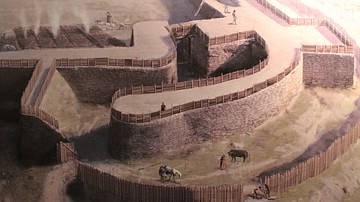
Image
Celtic Oppidum Reconstruction
A reconstruction illustration of the main gate of the Celtic oppidum (hilltop fort) of Arola in Spain. Oppida were built in the 3rd century BCE to 1st century CE in Celtic Europe. (Archaeological Museum, Bilbao)
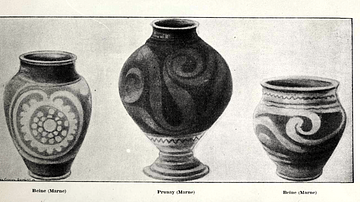
Image
Celtic Pottery Vessels, Marne, France
Three Celtic pottery vessels from La Marne, France. They shows typical Celtic design features with their curvilinear shapes and decoration. 4th century BCE. (British Museum, London)
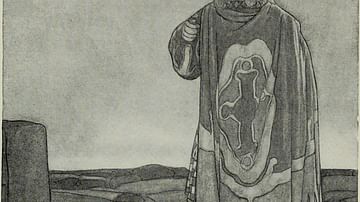
Image
Celtic Warrior with Spear
An illustration by Stephen Reid of a Celtic warrior with a spear. (Internet Book Archive image. From page 330 of "Myths and Legends; the Celtic Race", Rolleston, T.W., Boston-Nickerson, 1910)

Definition
Oppidum
Celtic hilltop forts, often called oppida (sing. oppidum), after the Latin name given to larger settlements by the Romans, were built across Europe during the 2nd and 1st century BCE. Surrounded by a fortification wall and sometimes with...
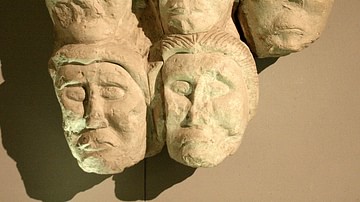
Image
Celtic Heads Sculpture, Entremont
A stone sculpture of human heads, the part of the body believed by the ancient Celts to hold the soul. From a sanctuary at the oppidum of Entremont, France. 2nd century BCE. (Musée Granet, Aix-en-Provence, France)
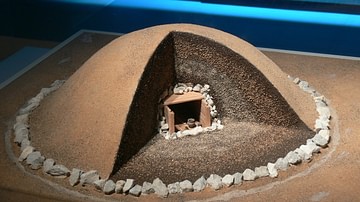
Image
Celtic Burial Mound Reconstruction, Hallstatt
A reconstruction of a Celtic burial mound from the Hallstatt culture of Austria and central Europe in the 1st millennium BCE. (German National Museum, Nuremberg)
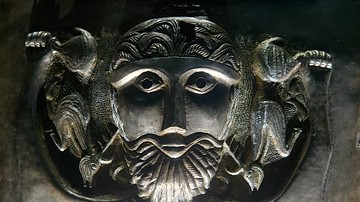
Image
Celtic Deity, Gundestrup Cauldron
A detail of the Gundestrup cauldron, a gilded silver vessel showing imagery of Celtic-inspired gods. Likely 1st century BCE, produced in the Balkans but found in Denmark in 1891 CE. (National Museum of Denmark, Copenhagen)

Image
Celtic Turoe Stone
The Celtic Turoe Stone, 1st century BCE. Covered in vegetal designs, the significance of the stone is not known but it likely had a sacred significance and probably once stood at a sacred site. Bullaun, County Galway, Ireland.

Image
Figures & Head Columns from Celtic Roquepertuse
Seated figures and stone columns with niches for human heads or skulls from a Celtic religious site at Roquepertuse, France. 3rd century BCE. (Musée d'histoire, Marseille, France)
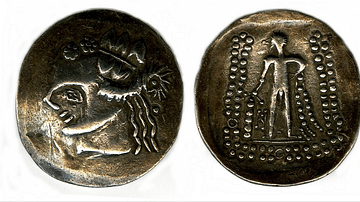
Image
Celtic Coin Showing Hercules
A Celtic coin from the Iron Age Balkans. Silver, 2nd-1st century BCE. The obverse shows Dionysos while the reverse shows a stylised Hercules holding a club and lion skin. (British Museum, London)